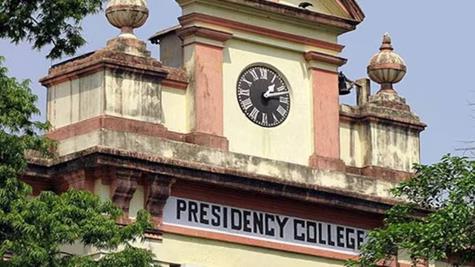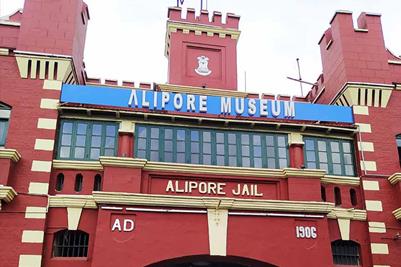Kolkata - City of Joy (কলকাতা করচা)
….. (1 day)
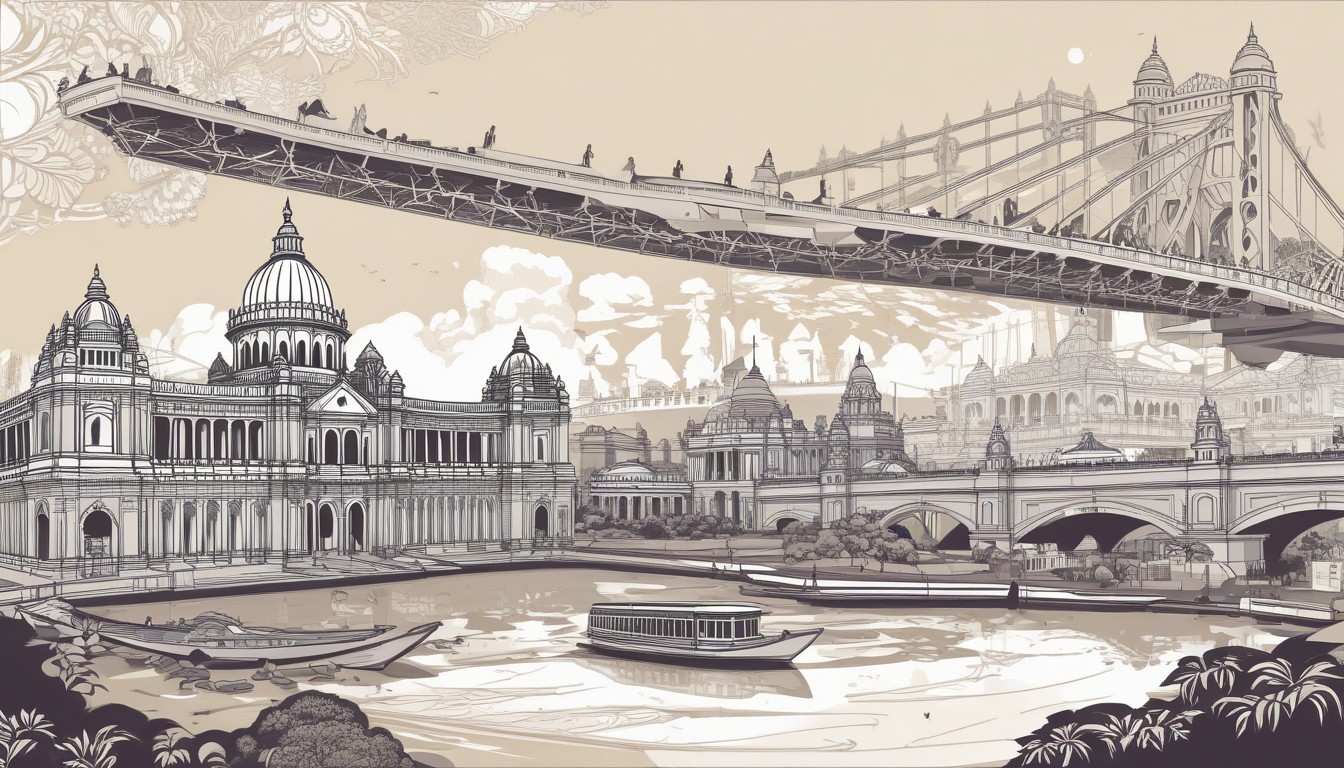
The College Street Coffee House, also known as the Indian Coffee House, is a venerable cafe situated opposite Presidency University in College Street, Kolkata. It stands as the most famous branch of Indian Coffee House in the city. Over the years, this establishment has become more than just a cafe; it’s a cherished hangout and renowned meeting place, commonly known as “adda,” for intellectuals, students, and ex-students from prestigious institutions such as Presidency College and the University of Calcutta, among others in College Street.
The cafe has played a significant role in the cultural history of Kolkata and is often regarded as the hub of intellectual debates. Its long-standing presence has witnessed countless discussions, conversations, and exchanges of ideas among the city’s thinkers, scholars, and students. The ambiance of College Street Coffee House exudes an old-world charm, and its walls seem to echo with the voices of the many luminaries who have frequented the establishment.
For generations, the coffee house has been a symbol of intellectual camaraderie and a space where individuals gather to share thoughts on literature, politics, art, and various other subjects. The tradition of adda, informal gatherings for discussions and debates, finds its quintessential home in the College Street Coffee House.
The cafe’s historical significance and cultural importance have made it a must-visit destination for those interested in experiencing the intellectual and literary heritage of Kolkata. It stands as a living testament to the city’s vibrant intellectual life and the role such spaces play in fostering a sense of community and dialogue among its residents.
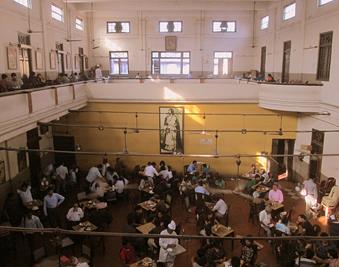
The cafe has played a significant role in the cultural history of Kolkata and is often regarded as the hub of intellectual debates. Its long-standing presence has witnessed countless discussions, conversations, and exchanges of ideas among the city’s thinkers, scholars, and students. The ambiance of College Street Coffee House exudes an old-world charm, and its walls seem to echo with the voices of the many luminaries who have frequented the establishment.
For generations, the coffee house has been a symbol of intellectual camaraderie and a space where individuals gather to share thoughts on literature, politics, art, and various other subjects. The tradition of adda, informal gatherings for discussions and debates, finds its quintessential home in the College Street Coffee House.
The cafe’s historical significance and cultural importance have made it a must-visit destination for those interested in experiencing the intellectual and literary heritage of Kolkata. It stands as a living testament to the city’s vibrant intellectual life and the role such spaces play in fostering a sense of community and dialogue among its residents.

The University of Calcutta, informally known as Calcutta University and abbreviated as CU, is a prestigious public state university situated in Kolkata, West Bengal, India. Established on 24 January 1857, it holds the distinction of being the oldest multidisciplinary university in the Indian Subcontinent and the South East Asian Region. Over its long and storied history, the university has evolved into a prominent institution of higher education.
The University of Calcutta has a vast academic network with 151 affiliated undergraduate colleges and 16 institutes spread across Kolkata and nearby areas. While its jurisdiction is currently limited to a few districts of West Bengal, it is important to note that at the time of its establishment, the university had a much broader catchment area, spanning from Kabul to Myanmar.
Within India, the University of Calcutta has earned recognition as a “Five-Star University” and has been accredited with an “A++” grade by the National Assessment and Accreditation Council (NAAC). This acknowledgment reflects the institution’s commitment to academic excellence and high standards of education.
Throughout its existence, the university has played a vital role in shaping the intellectual landscape of the region. It has been a hub for learning, research, and cultural exchange, producing numerous scholars and contributing significantly to various fields of study. The University of Calcutta continues to be a center for academic distinction and a cornerstone of the educational legacy of Kolkata and the broader Indian subcontinent.

The University of Calcutta has a vast academic network with 151 affiliated undergraduate colleges and 16 institutes spread across Kolkata and nearby areas. While its jurisdiction is currently limited to a few districts of West Bengal, it is important to note that at the time of its establishment, the university had a much broader catchment area, spanning from Kabul to Myanmar.
Within India, the University of Calcutta has earned recognition as a “Five-Star University” and has been accredited with an “A++” grade by the National Assessment and Accreditation Council (NAAC). This acknowledgment reflects the institution’s commitment to academic excellence and high standards of education.
Throughout its existence, the university has played a vital role in shaping the intellectual landscape of the region. It has been a hub for learning, research, and cultural exchange, producing numerous scholars and contributing significantly to various fields of study. The University of Calcutta continues to be a center for academic distinction and a cornerstone of the educational legacy of Kolkata and the broader Indian subcontinent.

College Street, known as Boi Para (Book Town) in Bengali, is a significant and vibrant street located in Central Kolkata, West Bengal, India. Stretching for a length of 900 meters, it extends from Bidhan Sarani road to Bowbazar (before Nirmal Chandra Street), passing through MG Road crossing and Surya Sen Street crossing. College Street is renowned for its rich academic and literary environment, earning it the nickname Boi Para due to the abundance of bookstores and educational institutions along the street.
The name “College Street” is derived from the presence of numerous colleges and universities situated in the vicinity. Notable educational institutions like the University of Calcutta, Calcutta Medical College, Presidency University, The Sanskrit College and University, City College of Commerce and Business Administration, and Goenka College of Commerce and Business Administration contribute to the street’s academic atmosphere.
One of the prominent landmarks on College Street is the Indian Coffee House, a historic café that has been a gathering place for the city’s intellectuals for many decades. The cafe has played a pivotal role in fostering intellectual discussions, debates, and cultural exchanges.
College Street is not only a hub of academic and intellectual activity but is also renowned as the largest book market in India and Asia. It holds the distinction of being the largest secondhand book market in the world. The street is lined with numerous bookstores and stalls, offering a vast array of books on diverse subjects and genres. Book lovers, students, and scholars frequent this area, making it a haven for those seeking literary treasures and intellectual engagement.
The unique blend of education, culture, and literature makes College Street a cultural landmark in Kolkata and a must-visit destination for anyone interested in the city’s rich intellectual heritage.
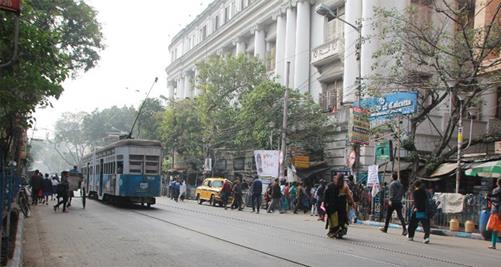
The name “College Street” is derived from the presence of numerous colleges and universities situated in the vicinity. Notable educational institutions like the University of Calcutta, Calcutta Medical College, Presidency University, The Sanskrit College and University, City College of Commerce and Business Administration, and Goenka College of Commerce and Business Administration contribute to the street’s academic atmosphere.
One of the prominent landmarks on College Street is the Indian Coffee House, a historic café that has been a gathering place for the city’s intellectuals for many decades. The cafe has played a pivotal role in fostering intellectual discussions, debates, and cultural exchanges.
College Street is not only a hub of academic and intellectual activity but is also renowned as the largest book market in India and Asia. It holds the distinction of being the largest secondhand book market in the world. The street is lined with numerous bookstores and stalls, offering a vast array of books on diverse subjects and genres. Book lovers, students, and scholars frequent this area, making it a haven for those seeking literary treasures and intellectual engagement.
The unique blend of education, culture, and literature makes College Street a cultural landmark in Kolkata and a must-visit destination for anyone interested in the city’s rich intellectual heritage.

The General Post Office (GPO) in Kolkata holds a central role in managing the postal services for the city and serves as the primary post office for the state of West Bengal. Located in the B. B. D. Bagh area, the GPO’s impressive structure stands out as a prominent landmark in Kolkata.
Notably, the Kolkata GPO is among the select Philatelic Bureaus in India, along with counterparts in Mumbai, Chennai, Parliament Street, and New Delhi GPOs. These bureaus are authorized to sell United Nations stamps, catering to philatelists and stamp collectors who are interested in acquiring stamps issued by the United Nations.
The GPO’s responsibility extends to handling a significant portion of both inbound and outbound mail and parcels for the city, emphasizing its crucial role in facilitating communication and postal services in the region. If you have any further inquiries or if there’s more information you’d like to explore, please feel free to ask!
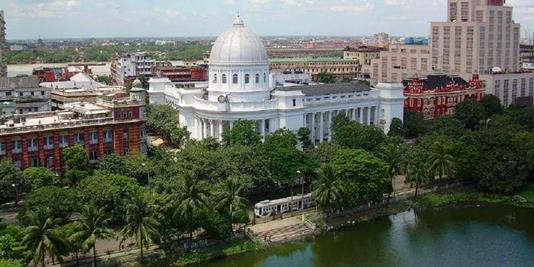
Notably, the Kolkata GPO is among the select Philatelic Bureaus in India, along with counterparts in Mumbai, Chennai, Parliament Street, and New Delhi GPOs. These bureaus are authorized to sell United Nations stamps, catering to philatelists and stamp collectors who are interested in acquiring stamps issued by the United Nations.
The GPO’s responsibility extends to handling a significant portion of both inbound and outbound mail and parcels for the city, emphasizing its crucial role in facilitating communication and postal services in the region. If you have any further inquiries or if there’s more information you’d like to explore, please feel free to ask!

The Kolkata Rail Museum, located in Howrah, was established in 2006 with the primary objective of showcasing the rich history and heritage of railways in the eastern part of India, with a particular emphasis on the iconic Howrah railway station.
The museum features a diverse collection of railway artifacts, equipment, and locomotives that played a crucial role in the development of the railway system in the region. Some notable exhibits include:
The museum features a diverse collection of railway artifacts, equipment, and locomotives that played a crucial role in the development of the railway system in the region. Some notable exhibits include:
- WCM-5 Electric Locomotive: The museum houses the first broad gauge electric locomotive built in India, known as WCM-5. This locomotive represents a significant milestone in the transition to electric traction in the country’s railway history.
- HPS-32 Steam Locomotive: A highlight of the collection is the HPS-32 steam locomotive, which has historical significance as it was captured during the Indo-Pakistani War of 1971. This locomotive serves as a tangible reminder of the
- intersection of railway history with broader historical events. Indraprastha Shunting Locomotive: The museum is home to the Indraprastha, claimed to be the oldest remaining Indian Railways shunting locomotive. This locomotive provides a glimpse into the early days of shunting operations in the Indian Railways system.
By preserving and showcasing these artifacts, the Kolkata Rail Museum offers visitors a chance to explore the evolution of rail transport in the eastern part of India, with a special focus on the significance of Howrah railway station. Museums like these play a crucial role in educating the public about the technological advancements and historical context of the railways.
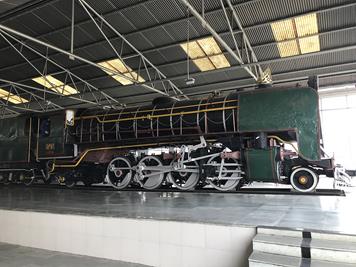
The Indian Museum, formerly known as the Imperial Museum of Calcutta before independence, stands as a monumental institution in Central Kolkata, West Bengal, India. Established in 1814 by the Asiatic Society of Bengal, it holds several distinctions, making it a prominent cultural and scientific hub:
As the ninth oldest museum globally and the oldest and largest in India and Asia, the Indian Museum boasts a rich history dating back to the colonial era.
Founded by the Asiatic Society of Bengal, the museum’s inaugural curator was Nathaniel Wallich, a Danish botanist with a passion for natural sciences.
The museum’s extensive collections encompass a wide range of artifacts, including antiques, armor, ornaments, fossils, skeletons, mummies, and Mughal paintings. These items showcase the cultural and historical diversity of the region.
The Indian Museum serves as a testament to India’s rich and diverse heritage, providing a comprehensive exploration of cultural and scientific artifacts.
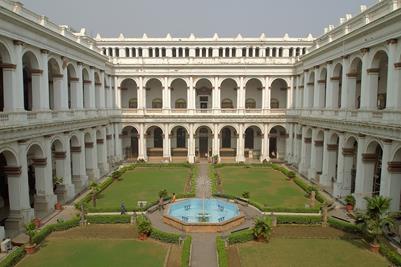
As the ninth oldest museum globally and the oldest and largest in India and Asia, the Indian Museum boasts a rich history dating back to the colonial era.
Founded by the Asiatic Society of Bengal, the museum’s inaugural curator was Nathaniel Wallich, a Danish botanist with a passion for natural sciences.
The museum’s extensive collections encompass a wide range of artifacts, including antiques, armor, ornaments, fossils, skeletons, mummies, and Mughal paintings. These items showcase the cultural and historical diversity of the region.
The Indian Museum serves as a testament to India’s rich and diverse heritage, providing a comprehensive exploration of cultural and scientific artifacts.

Trams hold a distinctive place in the cultural tapestry and historical legacy of Kolkata. While their numbers have diminished over time, they remain an enduring part of the city’s identity. A visit to Kolkata feels incomplete without experiencing the charm of a tram car ride, a unique and nostalgic journey that sets Kolkata apart. Here are some key aspects of Kolkata’s tram system:
Last Tram System in India: Kolkata proudly boasts the only remaining tram system in India, making it a rare and singular mode of transport in the country.
Possibly Unique in Asia: Kolkata’s tram system is suggested to be possibly the only one of its kind in Asia, contributing to its cultural significance and uniqueness.
Parallel Routes with Special Tracks: Tram routes in Kolkata run parallel to other vehicles, utilizing special tracks along the sides of bustling streets. This distinctive feature integrates them with the city’s traffic flow, reminiscent of miniature local trains.
Nostalgic Vintage Charm: The trams, though rusty, exude a vintage charm that adds to their allure. Despite their weathered appearance, these vehicles maintain a nostalgic quality that resonates with the city’s history.
Modern Amenities: Evolving with the times, the trams are equipped with modern amenities such as TV and FM radio. This blend of vintage aesthetics with contemporary features enhances the overall experience for passengers.
Tourist Popularity: Originally a vital mode of transport, trams have evolved into a popular attraction for tourists. Visitors now view a tram ride not just as a means of travel but as a unique and enjoyable way to explore the city.
City of Joy Experience: The reference to Kolkata as the “City of Joy” underscores the idea that a tram ride is not merely a mode of transportation but an experience that adds joy and character to one’s visit.
In essence, Kolkata’s trams encapsulate the city’s rich history, offering a journey that transcends time and provides a glimpse into its cultural evolution. The tram system’s popularity with both locals and tourists emphasizes its enduring appeal. To fully immerse oneself in the Kolkata experience, a tram ride is highly recommended.
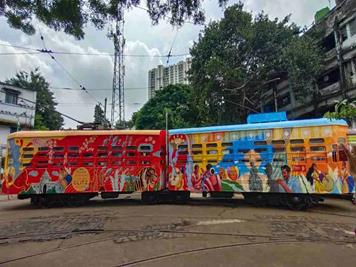
Last Tram System in India: Kolkata proudly boasts the only remaining tram system in India, making it a rare and singular mode of transport in the country.
Possibly Unique in Asia: Kolkata’s tram system is suggested to be possibly the only one of its kind in Asia, contributing to its cultural significance and uniqueness.
Parallel Routes with Special Tracks: Tram routes in Kolkata run parallel to other vehicles, utilizing special tracks along the sides of bustling streets. This distinctive feature integrates them with the city’s traffic flow, reminiscent of miniature local trains.
Nostalgic Vintage Charm: The trams, though rusty, exude a vintage charm that adds to their allure. Despite their weathered appearance, these vehicles maintain a nostalgic quality that resonates with the city’s history.
Modern Amenities: Evolving with the times, the trams are equipped with modern amenities such as TV and FM radio. This blend of vintage aesthetics with contemporary features enhances the overall experience for passengers.
Tourist Popularity: Originally a vital mode of transport, trams have evolved into a popular attraction for tourists. Visitors now view a tram ride not just as a means of travel but as a unique and enjoyable way to explore the city.
City of Joy Experience: The reference to Kolkata as the “City of Joy” underscores the idea that a tram ride is not merely a mode of transportation but an experience that adds joy and character to one’s visit.
In essence, Kolkata’s trams encapsulate the city’s rich history, offering a journey that transcends time and provides a glimpse into its cultural evolution. The tram system’s popularity with both locals and tourists emphasizes its enduring appeal. To fully immerse oneself in the Kolkata experience, a tram ride is highly recommended.


